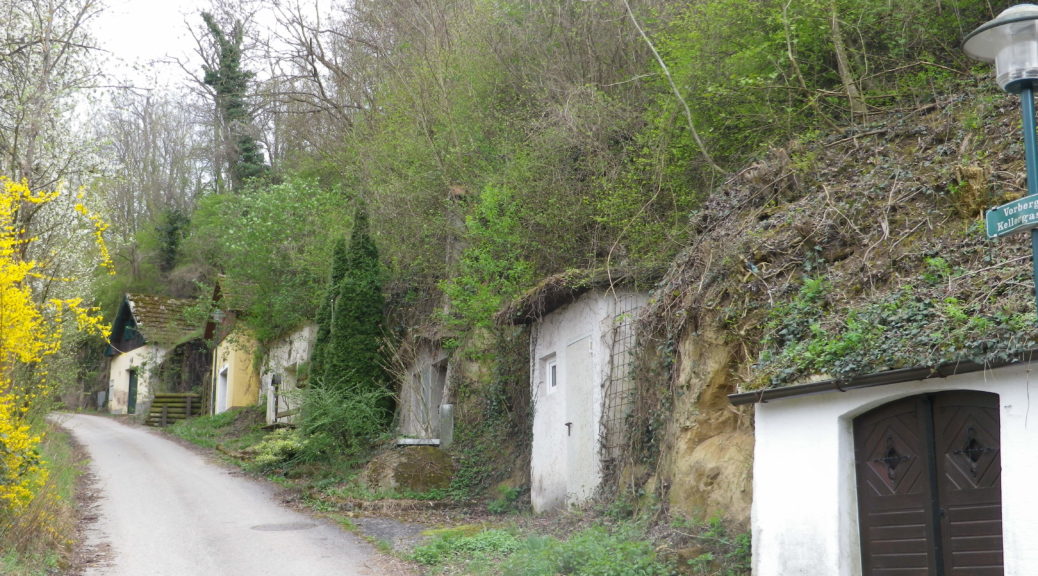The Traisental is the newest and smallest Austrian DAC region, and one I had never heard of. I decided therefore to visit the region’s trails and wineries. I quickly identified a great trail, the Korkenzieher. Korkenzieher is “corkscrew” in German, and the name of this trail derives from a monumental corkscrew rising above the vineyards, with a viewing platform overlooking much of the Traisental vineyard area. Perfect for a wine-themed hiking trail through this region!
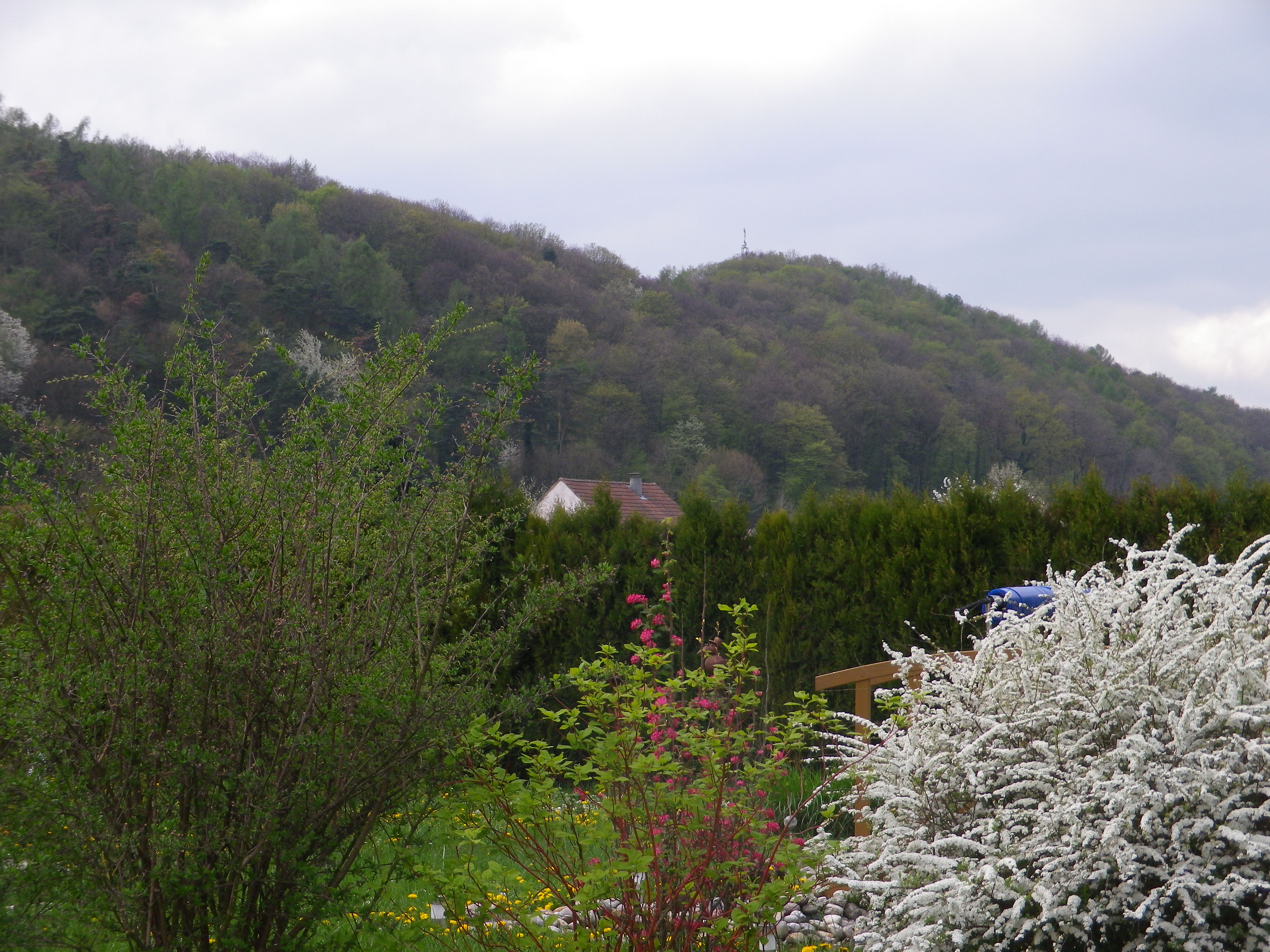
The trail is not a circuit (although it could be, by following a 4.5-kilometer bike path connecting Traismauer and Gemeinlebarn). Parking at the trail’s end opposite the train station in Traismauer, I waited for the regional train to take me to the trail’s start in the village of Gemeinlebarn.
Once finally at the start point, the trail made its way through the streets of the village to the hamlet of Ahrenberg. This is where the “corkscrew” actually is, on a steep hill just above the Ahrenberger Kellergasse. The Ahrenberger Kellergasse (cellar lane) is not-to-be-missed. Home to the “keller”, or cellars of the vintners, they serve as wine taverns (Heuriger) to thirsty crowds throughout different periods of the year. It joins the Eichberger Kellergasse at its northwestern end, making this lane one of the longest Kellergasse in Austria. There would be two Kellergasse on or near this trail: the Vorberg Kellergasse at the end of the trail in Traismauer, and this one, close to the trail in Ahrenberg. The day I was there, it was the only one with open taverns.
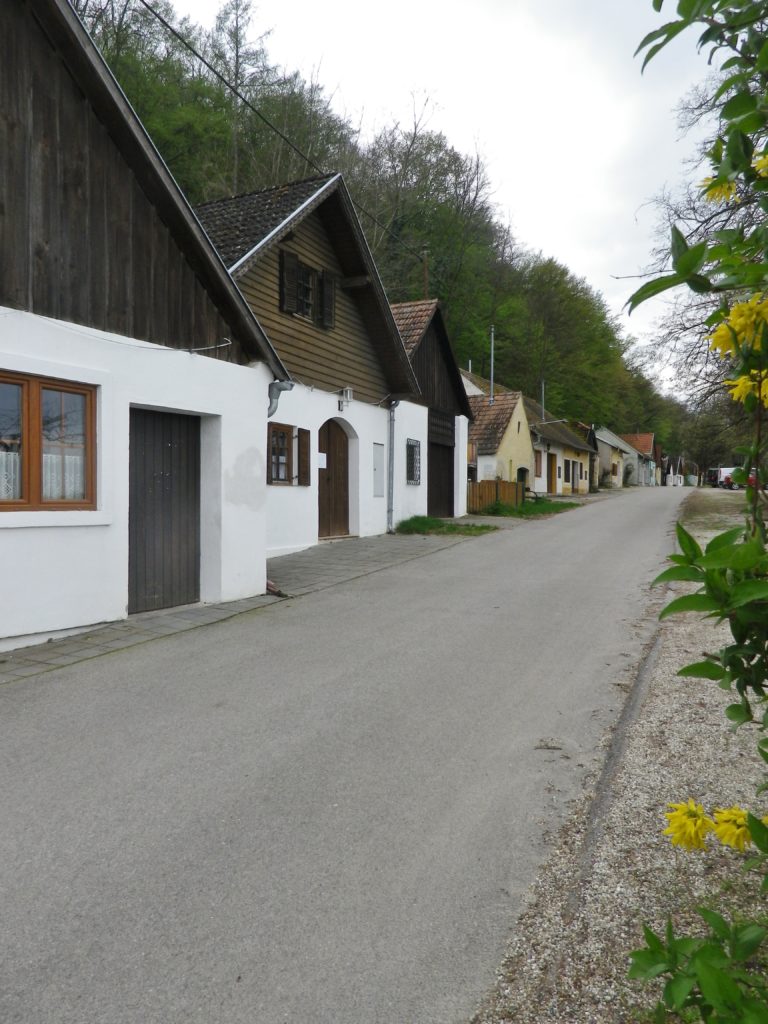
Unbelievably though, I found that the trail did not actually lead to the corkscrew or the taverns! I took a detour to gaze down the long row of Ahrenberger and Eichberger cellars (which extend for 1.5 kilometers). After just a quarter of a mile, having passed several taverns, and creative, artistic works of various sorts, as well as having imbibed lots of atmosphere, I determined to come back when I had more time.
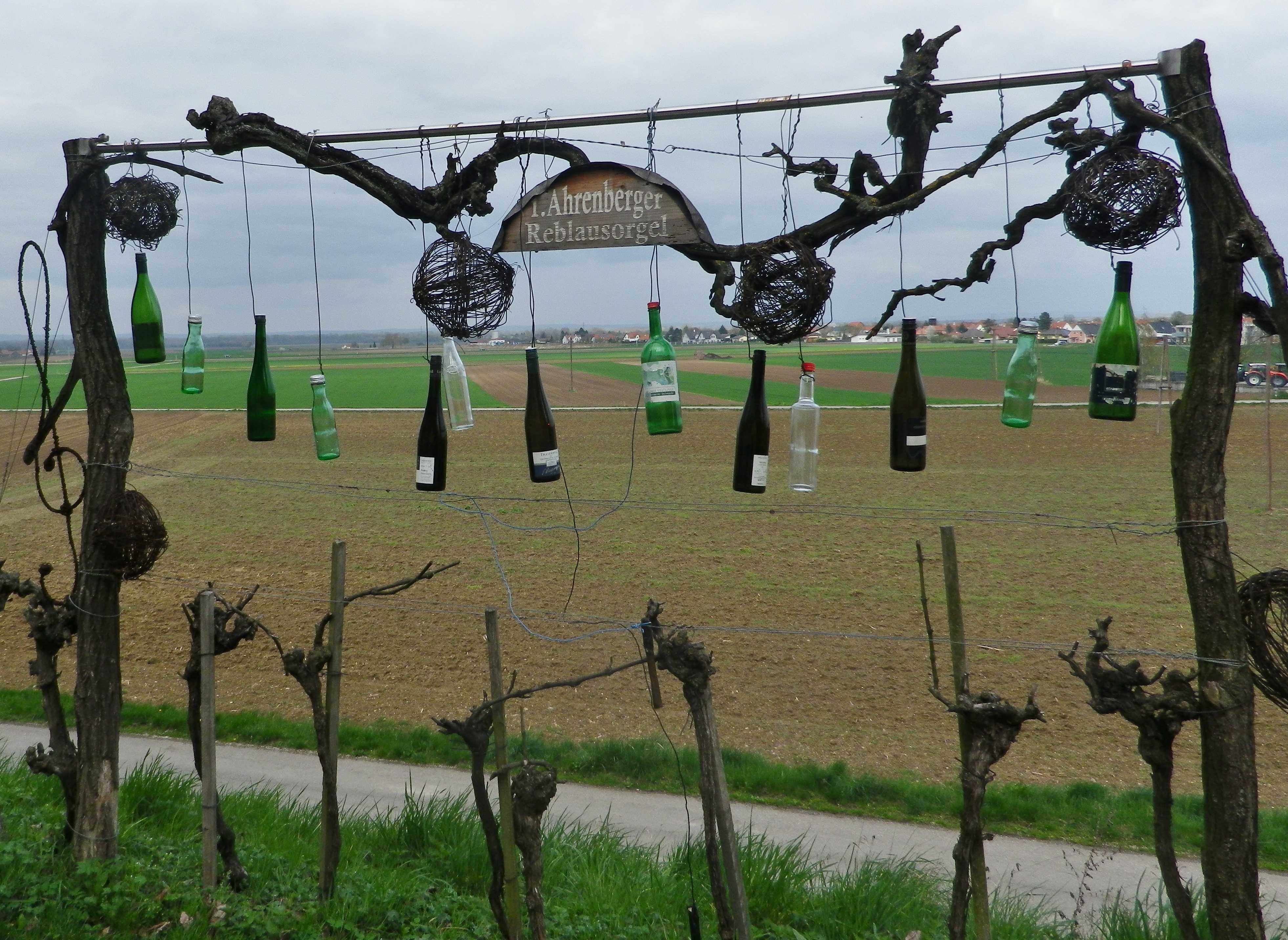
Thus, instead of heading toward the corkscrew via the cellars, this trail wandered up a valley. Perhaps that was the wiser of the two choices, as the Kellergasse and corkscrew tower is the obvious choice, and would have exhausted all the time I had for my trip that day. Instead, I had an opportunity to experience a less-travelled path through an amazing variety of landscapes. So, content with my glimpse of the corkscrew for the time being, I headed through a deep cut to the south-facing vineyards above Ahrenberg.
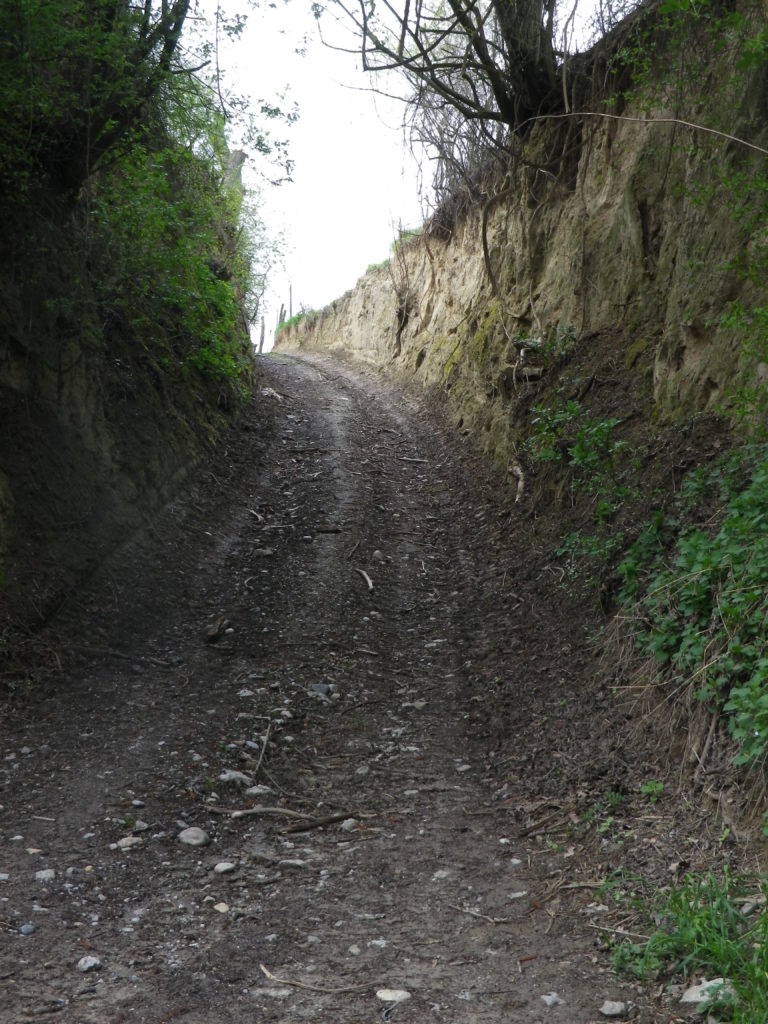
The trail twisted and turned as it went up through vineyards. Ultimately, I was rewarded with a view of a palace on a hilltop across the valley. It was the Schloss Sitzenberg, situated about in the middle of the DAC Traisental wine region’s east-west axis. Then, all views were lost as the trail entered the dark, and surprisingly long stretch of forest along the top of the ridge.
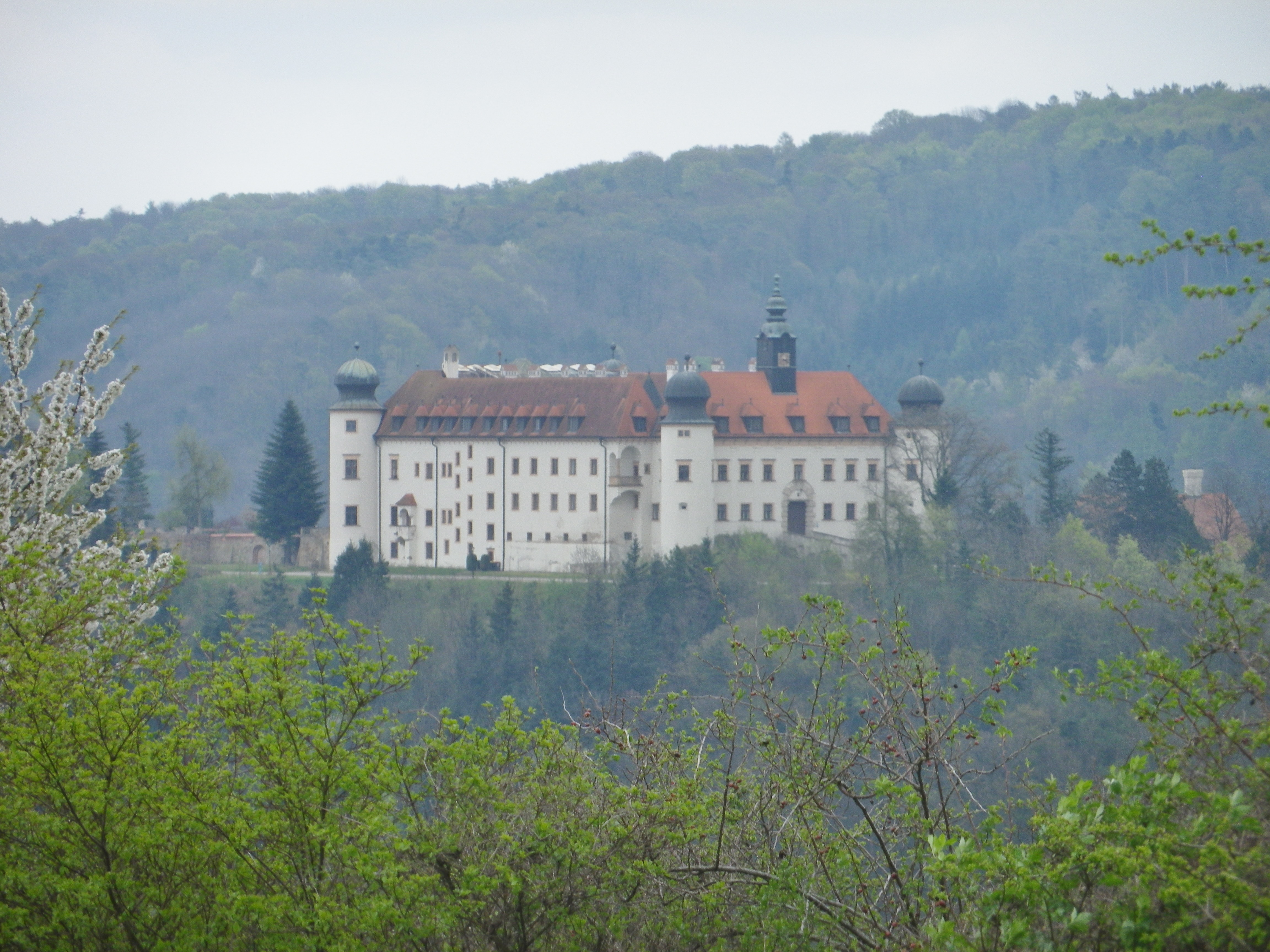
Once through the forest, the trail leads into fields and vineyards. Passing a shrine, well-maintained and obviously still used for devotional purposes, it was one of several works commemorating a saint along the trail. Traismauer’s named vineyards began as the trail approached the town. Many of these were well-known. In some cases, signboards proudly indicate the name of a particular “ried” (section of vineyard, or cru). I made a note to look for these on bottles from the region that I might see in future.
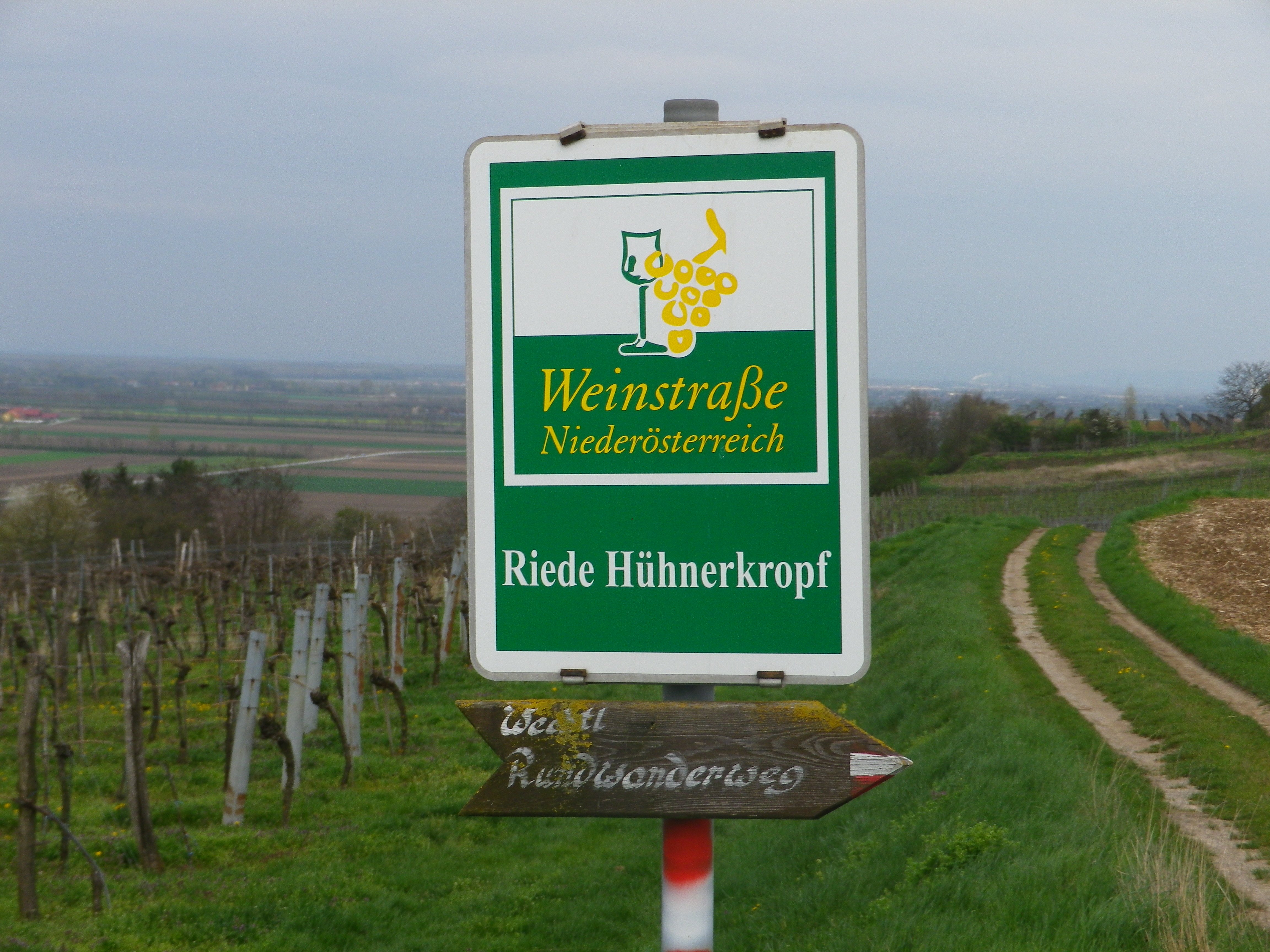
Unfortunately, heading back to town along the Vorberg “cellar street”, no taverns were open. Among the many things I learned that day was that hiking this trail with intent to enjoy wine at the end of it, requires careful planning. After all, no corkscrew, no wine!
